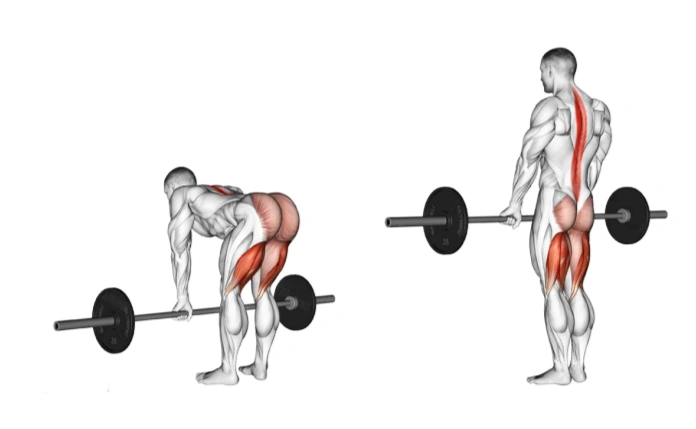How to improve deadlift? Honestly, it’s not just “pull harder.”
You’ve probably been there—bar’s not moving, back feels sketchy, grip giving out, or you just feel… stuck.
And yeah, it sucks. Especially when you thought you were doing everything right.
But here’s the thing: it’s usually not strength holding you back. Bad setup, poor timing, small errors. That’s what ruins a good deadlift.
Good news? Once you spot the problem, fixing it isn’t that hard.
This guide keeps it simple. Let’s break it down—and get your deadlift moving again.
Step 1: Diagnose Your Deadlift Weakness
Want to improve your deadlift? First, figure out where you’re breaking down.
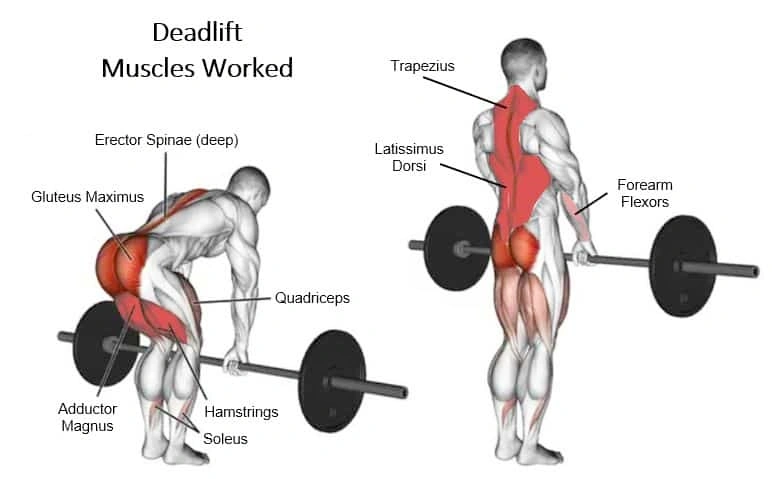
Not all failed reps are the same.
Here’s the three most common sticking points—and what they mean:
Problem 1: The bar won’t leave the floor
You pull, and… nothing.
Why?
- Bar too far from your shins
- Weak leg drive
- Poor setup or not tight enough
👉 It’s like trying to jump without bending your knees. Zero power from the start.
Problem 2: Stuck around the knees
You pull it up… then just freeze mid-air.
Why?
- Glutes not firing
- Hips shoot up too fast
- Lats not holding the bar close
👉 Feels like your body “gives up” halfway through the lift.
Problem 3: Can’t lock it out
You’re almost there—but the top feels soft and shaky.
Why?
- Weak glutes or core
- Not finishing with hips
- Poor upper back tension
👉 You’re lifting it up, but not owning the rep.
🎥 How to spot it
- Film from the side
- Watch the bar path and hip movement
- Pay attention to how it feels when you lift
Once you know where it breaks, you can fix it.
Step 2: Fix Your Technique
To improve your deadlift form, you don’t always need to get stronger—you need to get smarter.
Better setup = better lift. Every time.
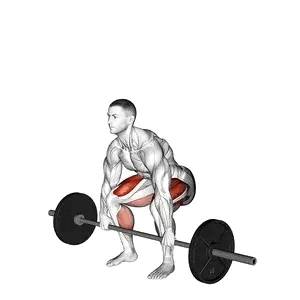
✅ Step 1: Get your stance right
- Feet under hips
- Toes slightly out
- Bar over mid-foot, close to your shins
👉 If the bar starts too far forward, your whole lift gets harder.
✅ Step 2: Grip and hands
- Hands just outside your legs
- Don’t go too wide
- Use mixed grip or hook grip if the bar slips
👉 If your grip is off, your shoulders and back get pulled out of position.
✅ Step 3: Set your back
- Big breath in
- Chest up, lats tight
- Hips slightly above knees
👉 Imagine “breaking the bar” to engage your upper back.
✅ Step 4: Pull with control
- Push the floor with your legs
- Keep the bar close—drag it up your shins
- Don’t yank. Stay tight all the way up.
👉 Rushing the lift is where most people lose it.
Bonus tip: Record yourself
Watch your angles. Are your hips shooting up first? Bar drifting away? That’s your clue.
Nail these basics, and your deadlift will already feel smoother—even without adding weight.
Step 3: Add Key Accessory Lifts
If you want to build a better deadlift, you need more than just deadlifts.
Sometimes, fixing one weak link makes everything feel easier.
Here’s what to add, based on where you’re struggling:
🔻 Trouble at the bottom?
The bar won’t budge from the floor.
Try these:
- Deficit deadlifts – Stand on a small plate. Forces better leg drive.
- Paused deadlifts – Pause just off the floor. Builds tension and control.
👉 These help you stop “yanking” and start pushing with power.
🔻 Stuck around the knees?
You pull, then stall mid-way.
Try:
Romanian dumbbell deadlifts – Strengthens hamstrings and glutes.
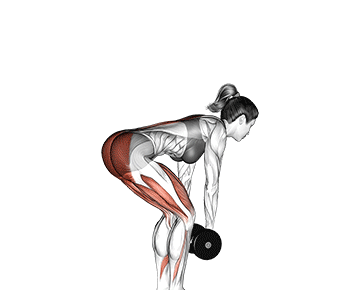
Barbell rows – Trains your lats to keep the bar close.
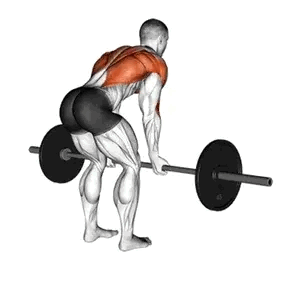
👉 Mid-pull issues are usually about timing or back strength.
🔻 Can’t finish the lockout?
Bar gets up… but hips don’t snap.
Go for:
- Hip thrusts – Pure glute power.
- Rack pulls – Focus on just the top half of the lift.
👉 These drills teach you to “own” the last part of the rep.
Pick 1–2 movements, twice a week. No need to overdo it.
Fix the weakness, and your deadlift will take off.
Step 4: Adjust Your Programming
Sometimes, how to improve deadlift results… comes down to how you plan your strength training.
It’s not just about pulling more. It’s about pulling smart.
✅ How often should you deadlift?
- Beginner? Once a week is enough.
- More experienced? Try 1–2 times, but vary the intensity.
→ Heavy day + light technique day works well.
👉 Going heavy every time just burns you out. You need balance.
✅ What should your sets and reps look like?
Here’s a super simple breakdown:
| Goal | Sets & Reps | Weight Intensity | Focus |
|---|---|---|---|
| Strength | 3–5 sets of 3–6 reps | 80–90% of 1RM | Lift heavy, stay tight |
| Technique/Form | 3–4 sets of 5 reps | 60–70% of 1RM | Perfect reps, smooth pull |
| Muscle/Volume | 3–4 sets of 8–12 reps | 50–65% of 1RM | Control, feel the tension |
✅ Add smart variation
- Use pauses, tempo, or blocks
- Try sumo if it fits your build
- Mix in RDLs or rack pulls on accessory days
Step 5: Recovery, Mobility & Equipment
Honestly, a lot of people overlook recovery when thinking about how to improve deadlift safely and consistently.
But if your body’s not recovering, no amount of perfect training will move the bar.
🛌 Recovery: the lift after the lift
You don’t grow while lifting. You grow while resting.
If your back’s sore for days or you feel drained every session, that’s not hardcore—it’s poor recovery.
Here’s the fix:
- Sleep 7–9 hours. Non-negotiable.
- Eat more. Especially protein.
- Take rest days seriously. Active recovery > doing nothing.
🦵 Mobility: unlock more power
Tight hips, stiff ankles, no hamstring control? That’s like lifting with the brakes on.
Try:
- Hip flexor stretches
- Banded ankle mobility
- Jefferson curls or RDLs (light) for hamstring control
Even 5–10 mins before training helps more than you think.
🧰 Equipment: use it smart, not first
- Lifting belt? Use it on your heavy sets—not warm-ups.
- Straps? Great for volume days, not max-out tests.
- Flat shoes or barefoot > squishy running shoes
So that’s how to improve deadlift—by fixing what matters most.
Start with the basics: clean up your form, find your weak points, and use the right accessory lifts.
Train smart, not just hard. Recover well. Stay consistent.
You don’t need to change everything overnight. Just one small fix at a time.
Keep showing up—and your deadlift will keep going up.

Hi, I’m Alex Carter, part of the editorial team at Leadman Fitness. We specialize in crafting premium custom racks, cable machines, functional trainers, and strength accessories for home and commercial gyms. With a background in competitive powerlifting and gym design consulting, I’ve spent years testing gear under heavy loads and optimizing layouts for efficiency.
I focus on translating real-world user frustrations—like space limitations, budget constraints, or durability needs—into actionable solutions. By collaborating directly with our engineers and facility owners, I ensure our custom equipment evolves to solve the unspoken challenges lifters face daily. What I share isn’t textbook advice; it’s battle-tested insight from racks I’ve welded, cables I’ve replaced, and gym floors I’ve trained on.
